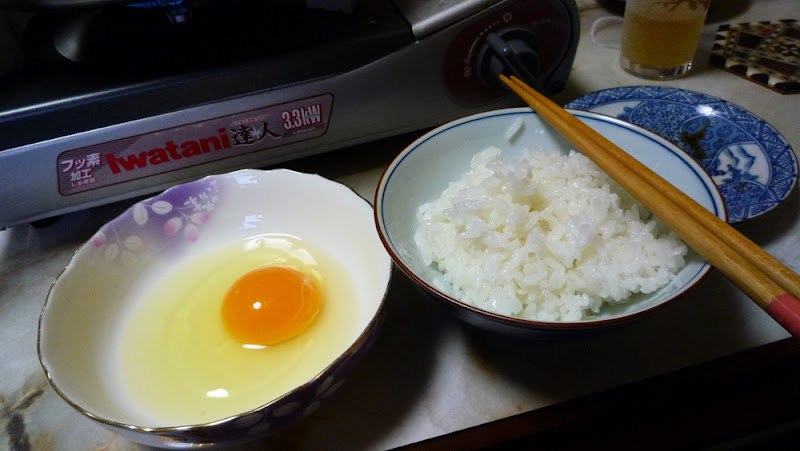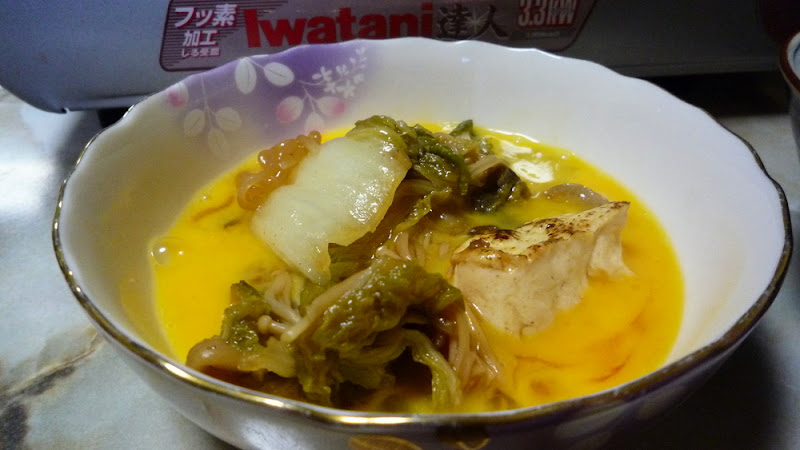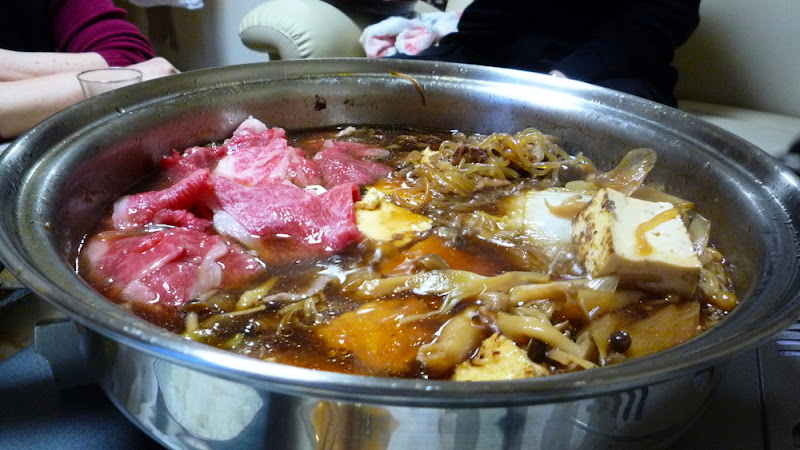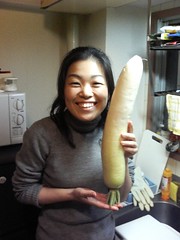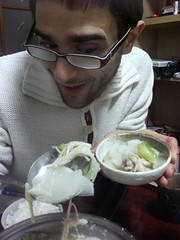Hacía más de 2 años que no os hablaba de uno de mis muchos platos favoritos de la cocina japonesa (y digo plato por decir algo). ¡Sukiyaki! Carne, tofu, puerro, setas (enoki y shiitake)… Todo con una salsa un poco dulce.
このブログすき焼きの話をしないで2年。日本料理の中でもかなりの好物なのに。お肉、豆腐、ネギ、エノキ、椎茸・・・そして甘い味付け。
It’s been more than 2 years since I last wrote about sukiyaki on this blog, but it’s one of my favorite Japanese dishes. Beef, tofu, green onion, enoki and shiitake mushrooms… All of them with a rather sweet seasoning.
Pero lo mejor es lo bien que combina todo con el huevo crudo. Cada comensal se bate un huevo en su cuenco y se sirve el sukiyaki. Una vez remojado en huevo crudo, se come con arroz. A mi suegra le sale buenísimo. ¿Habéis probado el sukiyaki? ¿Con huevo?
でも一番好きなのは生卵との相性。愛ちゃんのお母さんのすき焼きは大好きです。
But what I like best is how everything’s taste matches raw egg’s perfectly. You help yourself sukiyaki into a bowl with raw egg, and enjoy it with rice. Ai’s mother’s sukiyaki is delicious. Have you tried it? With or without raw egg?




